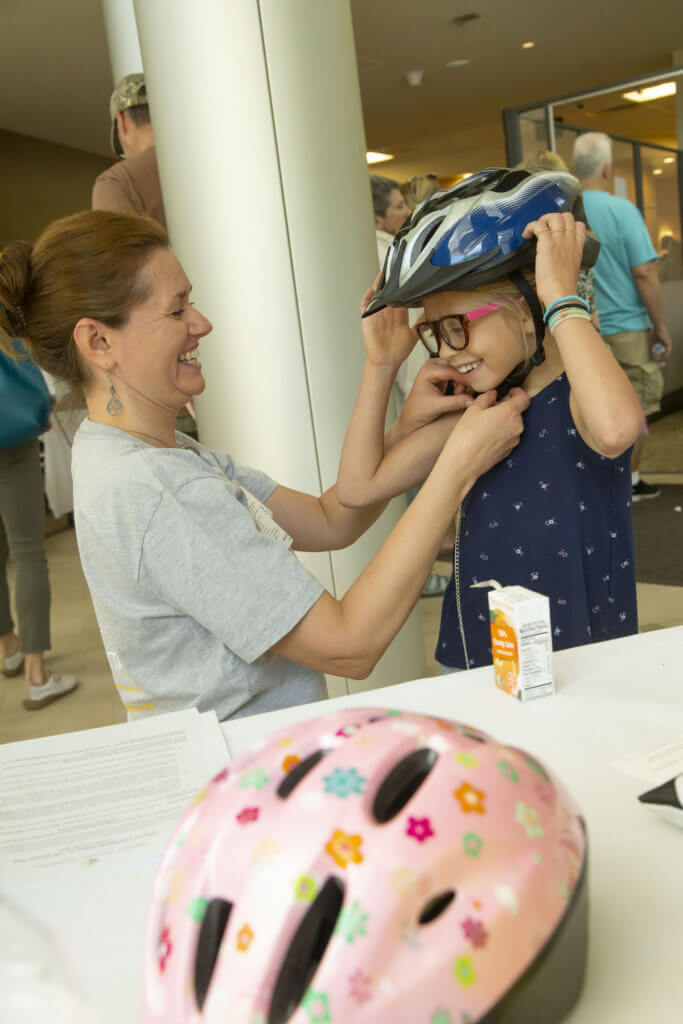Exercise & Fitness
Why Risk It? Helmets Save Lives
Like wearing a seatbelt in the car, wearing a helmet while skiing, snowboarding, skateboarding and cycling is a great habit to get into and could mean the difference between life and a debilitating injury or even death.
Aspen Valley Hospital has a long-established program that puts helmets on people’s heads. The Hospital offers helmets to those who need one, and will help people find a helmet that fits their sport and their head.
Trauma Program Manager Karen Maciejko, RN, BSN, is responsible for injury prevention efforts at Aspen Valley Hospital and runs the Helmet Program.
“People can email or call me, and we can set up a time that works,” she says. She can be reached at 970-544-1576 or kmaciejko@aspenhospital.org.
“Even with a helmet on you can still injure your brain, but a helmet can significantly reduce the severity of the injury,” Maciejko says. “I have seen some very lucky people with badly damaged helmets that absorbed the impact and protected their skull and brain.”
Maciejko provides helmets and information to the community in a variety of ways throughout the year, although the COVID-19 pandemic did make it more difficult. With COVID-19 restrictions easing, she’s hoping this year to be able to have a presence at the Ducky Derby, Bike to Work Day and the Aspen Valley Ski and Snowboard Club’s Fourth of July Picnic.

The Helmet Program also stocks helmets in the Hospital’s emergency room so staff can give them to patients. “If someone comes in with an injury because they weren’t wearing a helmet, the ER staff can offer them one,” she explains. “They do the same for someone who crashes with a helmet on.”
Overall community participation with wearing helmets is high. Nearly all kids and young adults wear helmets with all their activities. For those who didn’t grow up wearing helmets however, compliance is not as strong.
“Some people have never worn a helmet and are not interested in starting now,” Maciejko explains, “but as they get older and a little more frail, wearing one makes more sense.”
The other demographic failing to wear helmets are e-bike riders, which is concerning, given the fact that they are often visitors renting the e-bikes and have little or no experience on them.
“We’ve had a marked increase in e-bike injuries over the last few years,” she says. “I think we have some opportunities to work with bike shops to improve helmet use for those riding e-bikes.”
Many people don’t wear a helmet when they’re cycling around town. “I think people feel safe here in Aspen, but we do have a significant number of bike accidents in town and along the Rio Grande Trail,” Maciejko says.

The Hospital stocks different kinds of helmets to accommodate different sports like skiing and snowboarding, mountain biking and cycling. They also offer multi-sport helmets that are designed for skateboarding and other activities like riding a scooter. The Hospital does not carry helmets for motorized sports.
“It’s best to wear a helmet every time you ride a bike, skateboard, or ski or snowboard. You never know when you’re going to have an accident, or whether it’s going to result in a small bump on the head or something more serious that has the potential to change your life forever,” Maciejko says.
“Why not reduce your chances of a serious injury?”
Here are some simple tips for fitting a helmet:
- Find your size: Try on helmets to find the one that fits best. Many have dials in the back that allow adjustments. It should fit snuggly. People with a ponytail should be aware that it changes the way it fits.
- Helmet positioning: The front of the helmet should be one or two finger widths above your eyebrow. If you are helping someone else, be sure to use their fingers.
- Side straps: The helmet’s side straps should form a V with the bottom just below the ears. They can be adjusted by changing the length of the chin strap.
- Chin strap: The left side of the chin-strap buckle should be centered under the chin. When clicked together with the right side of the chin strap, if should fit snuggly so that it does not slide backwards or side to side.


